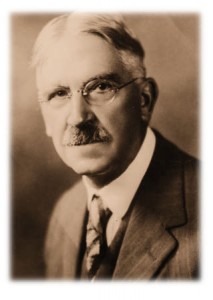 There are a lot of radio stations that play classic rock. Catering to a demographic that grew up with that music, their popularity indicates that the target population continues to strongly support that format. I am not sure to what degree those same listeners are hip to what is trending on DJ Booth or the content of Billboard’s Hot 100, but I suspect that the typical classic rock fan makes only the occasional foray outside of his or her musical comfort zone.
There are a lot of radio stations that play classic rock. Catering to a demographic that grew up with that music, their popularity indicates that the target population continues to strongly support that format. I am not sure to what degree those same listeners are hip to what is trending on DJ Booth or the content of Billboard’s Hot 100, but I suspect that the typical classic rock fan makes only the occasional foray outside of his or her musical comfort zone.
The same applies to technology. Most people enjoy a comfort zone largely established during what I refer to as their technological formative years. This time period varies from person to person but can typically include anything between adolescence and adult mid-career.
As adults become established in the workforce they tend to become proficient with the technology they need to carry out their jobs and build on that only when required to do so. Outside of work, people will only adopt new technologies when there is a clear, immediate, and meaningful rationale.
Some of us have had the experience of attempting to introduce cell phones to elderly parents. One does not have to ask too many people about this before encountering a story steeped in frustration. Some seniors simply do not have a personal connection with such technology and as a result often resist efforts to help them adopt it.
 Likewise, mid career Gen X’ers and mid to late career baby boomers became adept at common technologies of the day, and are generally skilled at e-mail, texting, and recreational social networking. But in many cases, emerging information and communication technologies have the potential to create anxiety and meet with resistance. Unless a meaningful connection is made, this group is less likely than subsequent generations to be enthusiastic users of virtual meeting software or to actively engage in professional social networking.
Likewise, mid career Gen X’ers and mid to late career baby boomers became adept at common technologies of the day, and are generally skilled at e-mail, texting, and recreational social networking. But in many cases, emerging information and communication technologies have the potential to create anxiety and meet with resistance. Unless a meaningful connection is made, this group is less likely than subsequent generations to be enthusiastic users of virtual meeting software or to actively engage in professional social networking.
In nearly all cases, there should be no pressure for people to step outside their comfort zone and engage in emerging technologies unless they realize some personal gain from doing so. However, there is one field in which resistance to emerging technologies is completely unacceptable: education.
As educators, our chief responsibility is to build capacity, both in our students and in those around us. As learning leaders, we need to model lifelong learning. As teachers, we must prepare our students for a rapidly changing world. We are not likely to inspire our students to engage with new technologies unless we ourselves set the example.
 While there are some self-motivated individuals who will find ways to consistently integrate current ICT into their learning, we do a disservice to students when we allow ourselves to be satisfied with our existing skill set. We cannot require anything more from our students than what we ourselves possess. As educators, we must remain progressive, forward thinking, and never be satisfied with the status quo. Contemporary, forward thinking educators do not consider technology in isolation from good pedagogy.
While there are some self-motivated individuals who will find ways to consistently integrate current ICT into their learning, we do a disservice to students when we allow ourselves to be satisfied with our existing skill set. We cannot require anything more from our students than what we ourselves possess. As educators, we must remain progressive, forward thinking, and never be satisfied with the status quo. Contemporary, forward thinking educators do not consider technology in isolation from good pedagogy.
Education leaders at all levels must realize that they have an obligation to build capacity in their colleagues with the intent to driving growth at the classroom level. They must commit to using their influence to continually move the school system forward, adopting and exploiting new information and communication technologies to benefit student learning. Those who are not willing to make this commitment need to reconsider their role in education.
Classic rock has its appeal, but educators cannot remain rooted in classic practice.







